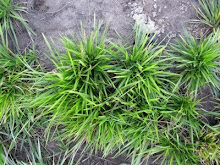What is GrassPortal all about? Well, here are the basics. It is being developed as an ecological informatics service for the grasses - a system that acquires and processes ecological information about grasses on an enormous scale, covering every one of the world's 11,000 species. But all that goes on behind the scenes. Users of this system will be able to view information about the geography, environment and biology of grass species in an easily digestible form. Perhaps most importantly, they will be able to explore and visualize this information using tools specially designed for the job. Using this intuitive and easily navigated interface, we hope to attract users from a broad spectrum of research areas, and to develop modules that will enable this research tool to be used in teaching.
How will GrassPortal gather its information? Watch this space for more details but, again, here are the basics. Digitised herbarium collections and other species occurrence data will be used to define the geographical range of each species. This information will then be plotted onto a spatial representation of the global environment - including, for example, maps of climate, soils, fire and vegetation. By looking at where, and in what environments, each species lives, GrassPortal will then be able to summarize the environmental preferences of each species. This, in turn, will be linked to information on the biology of each species, and the evolutionary relationships between them. The result will be a fully integrated system that allows users to investigate the biology, ecology and evolution of grasses - all in a single location - and at a scale that (we think) has never before been attempted for plants.


